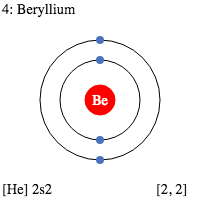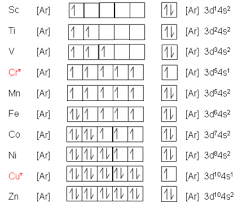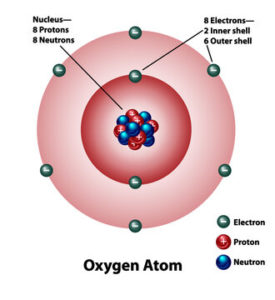The electronic structure of atoms is the distribution of electrons in molecular or atomic orbitals. These atoms are divided into two types: s-subshell and d-block. These types of atoms exhibit various properties, such as their electrical conductivity and their repulsions.
In this article, we will talk about:-
- s-subshell
- d-block elements
- oxygen
- hydrogen
s-subshell atoms

The s-subshell electronic structure of atoms describes its electron configuration. The electrons in an s-subshell are located in the d orbitals of atoms. These electrons have the capacity to hold two protons and two neutrons. Normally, electrons are filled in order of energy, with the lowest n-values being filled first. This is called the Madelung rule.
The energy of an atomic orbital increases as the principal quantum number (n), increases. Electrons in the 1s orbital have the lowest energy, followed by the 2s, 2p, and 3s orbitals. The energy of the electrons increases with increasing n value. While n has the opposite effect for small atoms. However, the energy of electrons in different subshells can be predicted using certain principles.
The s-subshell electronic structure of a chemical atom is dependent on the principal quantum number, n. Subshells have two or three subshells. The s-subshell contains two, six, or even fourteen electrons. The p-subshell, on the other hand, has three subshells. The d-subshell contains five subshells. The f-subshell can hold up to fourteen electrons.
The s-subshell electronic structure of a chemical atom is very important for understanding reactivity of an atom. In particular, the p-block atoms like aluminum, beryllium, and magnesium have filled s-subshells. Therefore, beryllium and lithium have similar s-subshell configurations. This means that the s-subshell, the p-block atoms have an electron configuration with a higher energy level than that of the n-block.
In addition to the s-subshell electronic structure, an element’s atomic configuration reveals the electron distribution across its atomic orbitals. These configurations are shown in a symbolic notation in superscript. And there are useful in identifying elements and compounds. The first atomic number, carbon, has an electronic configuration of 1s22s22p2. The second atom, oxygen, has an atomic number of six and has an s-subshell electronic structure of 2s2p4.
d-block elements

D-block elements in the electronic structure of atoms are defined as elements, whose electrons occupy the d-orbital in the next to last energy level. This orbital is the outermost orbital and is filled with electrons in one of the two forms: either a paired or unpaired. These elements are metals or transition metals. Generally speaking, transition metals are metals that have partially filled d-orbitals, but are not fully filled.
D-block elements are characterized by their valence shells, which are in a specific order. This is known as the Aufbau-Hund rule. The electrons in a d-block element usually go into the d-orbital before those in the outermost shell, the 3d orbital. However, this is not true for all elements in the d-block.
The s-block is situated between the p and d-block elements and is differentiated by its characteristic properties. A typical s-block element has a higher electronegativity than a p-block one, while a d-block element has a lower one. The p-block elements, on the other hand, are similar in properties to their s-block counterparts.
The D-block elements have the largest ionization energy in the electronic structure of atoms. This is directly related to the nuclear charge and inversely proportional to the atomic radii. The first ionization energy for a d-block element increases as its atomic size decreases. The second ionization energy is higher than for an s-block element.
The f-block elements are unified by the electrons that reside in their inner f-orbital. There are seven pairs of electrons within the f-block. The f-block elements occupy fourteen columns in the periodic table. These elements are not assigned a group number, but they are grouped together in a row. These elements do not share a common valence shell and do not exhibit a vertical periodic trend.
Hydrogen

Hydrogen is the lightest element in the universe. It is a diatomic molecule with the chemical formula H2. It is colorless, odorless, and tasteless. Hydrogen is non-toxic and highly combustible. Hydrogen’s electronic structure is largely unknown. But, it is important in many fields, including medicine, electronics, and the energy industry.
Hydrogen occupies the first s orbital, the lowest energy level. It is spherically symmetric around the nucleus, and has one electron per shell. The second type of orbital is called the 2s orbital. It has the same energy as the s orbital, and has two electrons. In the electronic structure of hydrogen, the s orbital is the lowest energy level, while the 2p orbital has the highest energy.
The energy levels of hydrogen atoms depend on their orbitals. When an electron moves from its first shell to its second, it has energy E2 and is in the ground state. As the electron travels from one shell to the next, it can move to a higher level, n=2, and finally, n=4 or n=5.
In the simplest case, hydrogen bonds with other atoms. This is a result of the hydrogen atoms sharing electrons. These bonds are polar, meaning that the energy of the hydrogen bonding is proportional to the difference in electronegativity of the atoms involved. Unlike covalent bonds, hydrogen bonds can be very weak, with a strength of about 0.01, while those formed by a C-H bond have a much higher electronegativity.
Oxygen

We have discussed the electronic structure of atoms of oxygens, but how do we explain it? Usually, we describe it using the Lewis structure, which has six valence electrons and an outermost shell with eight electrons. In fact, oxygen actually has two more electrons in the outermost shell than it has in the nucleus, so it is more like a ‘p’ atom. The Lewis structure gives us a very clear picture of the structure of oxygen, which is why we see it drawn as an ‘p’ atom.
An atom’s electron configuration depends on the number of electrons in its last orbit. In the case of oxygen, the electron configuration indicates that there are six electrons in this orbit. These electrons are what form the covalent bonds between oxygen atoms. This happens because oxygen atoms always seek to fill the electron in the last orbit. As a result, they form covalent bonds with other atoms.
The Lewis formula is a useful first step in understanding covalent bonding. The Couper-Kekule formula, on the other hand, shows shared electron pairs by lines, while the valence electrons are represented by dots. The Couper-Kekule formula was derived from the graphic notations proposed by A. Couper and A. Kekule. However, the formulas do not exactly match the original drawings.
The electron configuration of oxygen is very complex. The electrons enter the 1s orbital first, then move through the 2s orbital. Then, another two electrons enter the 2s orbital, and so on. This sequence repeats until the last three electrons enter the 2p orbital. The electron configuration of oxygen is described in an orbital diagram, which can be seen below. It is an excellent example of a chemical bond and explains how the atoms of oxygen interact with one another.


[…] elements. Heavy p-block elements are distinguished from their lighter congeners by the lack of d-orbitals in the second period. Inorganic chemistry also uses analytical methods to analyze inorganic […]